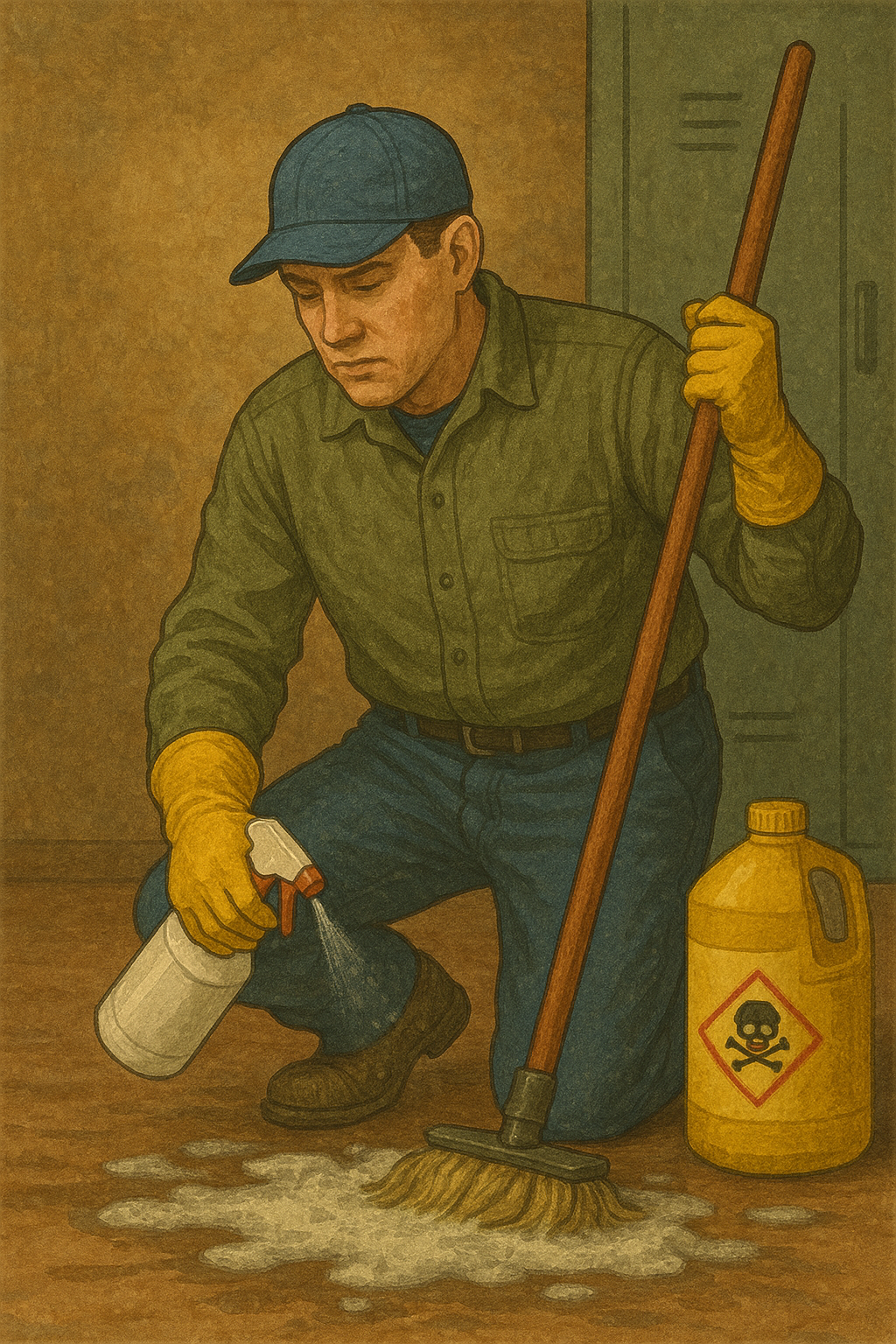Safe use of industrial cleaning chemicals in the workplace is not just a matter of cleanliness—it’s a critical component of occupational health and safety.

These powerful agents, while essential for hygiene, disinfection, and maintenance, pose significant risks if handled improperly. From skin burns to toxic inhalation, the dangers are real, but entirely preventable.
- ⚠️ Understanding the Risks of Industrial Cleaning Chemicals
- 📋 Know Your Chemicals: Read the Safety Data Sheet (SDS)
- 🧤 Personal Protective Equipment (PPE) Is Non-Negotiable
- 🛑 Never Mix Chemicals Without Approval
- 🧯 Proper Storage and Ventilation Practices
- 📦 Labeling and Secondary Containers
- 🧼 Safe Cleaning Procedures Step-by-Step
- 📚 Training and Emergency Response Readiness
- 🔄 Continuous Improvement and Safety Culture
- ✅ Conclusion: Safe Use of Industrial Cleaning Chemicals in the Workplace
⚠️ Understanding the Risks of Industrial Cleaning Chemicals
Industrial-grade cleaners often contain corrosive, flammable, or reactive substances like ammonia, chlorine, quaternary ammonium compounds, acids, and solvents. When improperly used, they can cause:
- Skin and eye irritation or burns
- Respiratory issues from inhaling fumes
- Chemical poisoning through absorption or ingestion
- Combustion or reactions if incompatible chemicals mix
Real-life incidents—such as the deadly chlorine gas release from mixing bleach with acid—underscore the importance of comprehensive safety training.
📋 Know Your Chemicals: Read the Safety Data Sheet (SDS)
Every chemical in your facility must have a Safety Data Sheet (SDS) readily accessible. The SDS provides:
- Hazard identification
- Handling and storage instructions
- PPE requirements
- First aid measures
- Emergency procedures
Train employees to review SDSs before using unfamiliar products and encourage a culture of hazard awareness.
🔗 DoFollow Resource: OSHA’s Hazard Communication Standard
🧤 Personal Protective Equipment (PPE) Is Non-Negotiable
The safe use of industrial cleaning chemicals starts with the right PPE, which varies by product. Essential gear includes:

- Chemical-resistant gloves (nitrile, neoprene)
- Safety goggles or face shields
- Protective aprons or coveralls
- Respirators or masks (especially in enclosed areas)
Always inspect PPE before use and replace it if damaged.
🛑 Never Mix Chemicals Without Approval
One of the most dangerous practices in cleaning is mixing chemicals. For example, bleach and ammonia produce toxic chloramine vapors. Strict protocols should be in place:
- Store incompatible chemicals separately
- Label all containers clearly
- Only trained personnel should handle chemical preparation
🧯 Proper Storage and Ventilation Practices
Chemical storage should follow these guidelines:
| Chemical Type | Storage Requirement |
|---|---|
| Acids | Corrosion-resistant cabinet, away from bases |
| Flammable liquids | Cool, well-ventilated, explosion-proof cabinets |
| Oxidizers | Away from combustibles, in a dry place |
Ventilation is critical. Use fume hoods or exhaust fans when using volatile agents. Poor ventilation increases the risk of inhalation and explosion.
📦 Labeling and Secondary Containers
All containers must be clearly labeled with:
- Product name
- Hazard symbols
- Handling instructions
When transferring to a secondary container (like a spray bottle), never reuse food or drink containers. Always use industrial-grade, pre-labeled containers or label them immediately.
🧼 Safe Cleaning Procedures Step-by-Step
- Check SDS for the chemical’s specific risks.
- Wear PPE before retrieving or using the chemical.
- Use the correct dilution, following manufacturer guidelines.
- Apply with care, avoiding splashes and spills.
- Ensure good airflow and never work alone.
- Clean equipment and return chemicals to storage immediately.
- Dispose of waste properly according to local environmental laws.
🔗 DoFollow Resource: Canada.ca – Workplace Hazardous Materials Information System (WHMIS)
📚 Training and Emergency Response Readiness
Routine chemical safety training is vital.

Include:
- WHMIS/GHS label understanding
- Spill containment drills
- First aid for chemical exposure
- Eye wash and emergency shower use
Make sure your team knows how to respond to a chemical spill or exposure incident, including calling emergency services, evacuating, and using spill kits.
🔄 Continuous Improvement and Safety Culture
Encourage employees to:
- Report damaged containers or unlabeled bottles
- Suggest safer alternatives (e.g., switching to less toxic chemicals)
- Take refresher courses annually
- Perform regular safety audits
Internal links to consider adding:
- Link to your Workplace Chemical Safety Policy
- Link to your Training and Incident Reporting Portal

✅ Conclusion: Safe Use of Industrial Cleaning Chemicals in the Workplace
The safe use of industrial cleaning chemicals in the workplace is essential for protecting employees, reducing liabilities, and maintaining regulatory compliance. By implementing strict protocols, ensuring proper PPE, and promoting a safety-first mindset, employers can minimize the risks posed by these powerful substances.
Make safety a daily habit—and remember, every safe chemical handling step saves lives.


No comments yet